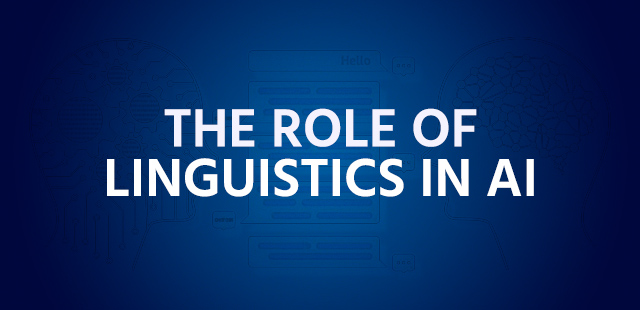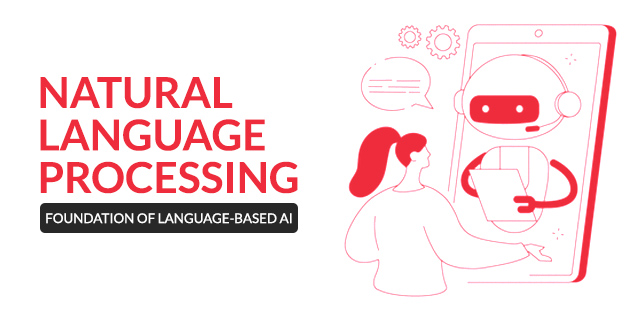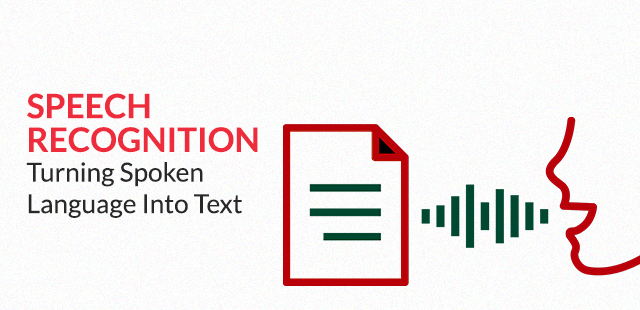Blog > The Role of Linguistics in AI
The Role of Linguistics in AI
May 19th, 2023

Table of Contents

Artificial Intelligence (AI) has revolutionised the modern world. From automated systems to self-driving cars, we can see the footprints of AI in most industries and subsectors. As AI grows more and more powerful, it gets deeply integrated into all aspects of our lives.
The role of linguistics in AI is one such aspect which has become significant in recent years. Linguistics are leveraged to develop natural language processing (NLP) algorithms that allow our machines and systems to comprehend, engage, and generate human language effectively. Because of how valuable this technology is becoming, companies are always searching for skilled professionals to hire. Artificial intelligence courses in India have recognised the potential benefits of a career in this field, and hence have started AI certification programs for freshers that specialise in linguistics.
This article will explore the significance of linguistics in AI, the intricacies of the field, and why they’re important in today’s world. Upskill with artificial intelligence courses and lead the revolution into this transformative new technology.
Natural Language Processing (NLP), is a branch of AI that focuses on helping computers comprehend, interpret, and produce human language. NLP essentially forms the core of Language-based AI. Recent developments in Deep Learning have now made it possible for NLP models to extract meaning, feelings, and entities by processing enormous quantities of unstructured data.
Numerous language-based AI applications have been created thanks to NLP - think Google Assistant, Apple's Siri, and Amazon's Alexa. Virtual Assistants use NLP to understand and carry out requests. Be it delivering information or even just playing a song!
The use of linguistic principles in AI has led to substantial breakthroughs in speech recognition technologies. These technologies enable seamless communication between humans and machines by translating spoken words into written text. Major industries are now driving towards AI Based softwares and technologies.
For example: AI-driven speech recognition has had a significant impact on various industries, like medical transcribing services. Doctors can record patient information verbally, into a system that will note it down, saving time and lowering the possibility of an error. Additionally, voice assistants like Siri and Google Assistant use speech recognition to understand user requests, improving the usability and intuitiveness of our interactions with the technology.
Another impressive way that linguistics are used in AI is in Language translation . Advanced algorithms are used by Machine Translation (MT) systems to automatically convert text or speech from one language to another.
AI-powered translation services can assist in bridging language gaps. Users can translate individual words or whole web pages into other languages using online tools like Google Translate. People from various linguistic origins can now interact and work together successfully thanks to this transformation of cross-cultural communication. Further, these AI tools are critical to industries like Tourism, where real-time translation is required.
Artificial Intelligence (AI) has emerged as a transformative force across various industries, and its impact continues to grow rapidly. As a result, the importance of linguistic expertise after completing an Artificial Intelligence course cannot be overstated.
Moreover, AI language models are revolutionising translation services, content generation, and sentiment analysis, among other applications. The demand for professionals with expertise in linguistic roles within AI is growing massively, offering immense opportunities for freshers in the fields like Healthcare, Finance and many more. By enrolling in an Artificial Intelligence and Machine Learning Program, students can land jobs in a very in-demand sector.
Related : The Future of AI: Trends and Technologies Covered in Artificial Intelligence Courses
As India gears up for the AI revolution, linguistics is one of the central technologies that is emerging as incredibly important and in-demand. A career in AI linguistics is going to be prosperous, but also highly competitive. Hence, by obtaining an AI certification from upGrad Campus, freshers will be able to upskill themselves and get in-depth knowledge of elements such as sentiment analysis, content development, virtual assistants, translation services, and chatbots.
. Our programs rank as some of the best artificial intelligence courses in India due to our excellent faculty, numerous resources and placement opportunities. Enroll in one of the most comprehensive AI courses online with upGrad Campus and be at the forefront of this exciting new field.
Related : Opportunities and Challenges in the field of AI and ML for Freshers
- Introduction to the Linguistic Role in AI
- Natural Language Processing- Foundation of Language-Based AI
- Speech Recognition- Turning Spoken Language Into Text
- Language Translation: Bridging The Gap Between Languages
- The Linguistic Edge: Opportunities with AI Certification
- Conclusion
Introduction to the Linguistic Role in AI

Artificial Intelligence (AI) has revolutionised the modern world. From automated systems to self-driving cars, we can see the footprints of AI in most industries and subsectors. As AI grows more and more powerful, it gets deeply integrated into all aspects of our lives.
The role of linguistics in AI is one such aspect which has become significant in recent years. Linguistics are leveraged to develop natural language processing (NLP) algorithms that allow our machines and systems to comprehend, engage, and generate human language effectively. Because of how valuable this technology is becoming, companies are always searching for skilled professionals to hire. Artificial intelligence courses in India have recognised the potential benefits of a career in this field, and hence have started AI certification programs for freshers that specialise in linguistics.
This article will explore the significance of linguistics in AI, the intricacies of the field, and why they’re important in today’s world. Upskill with artificial intelligence courses and lead the revolution into this transformative new technology.
Natural Language Processing - Foundation of Language-Based AI

Natural Language Processing (NLP), is a branch of AI that focuses on helping computers comprehend, interpret, and produce human language. NLP essentially forms the core of Language-based AI. Recent developments in Deep Learning have now made it possible for NLP models to extract meaning, feelings, and entities by processing enormous quantities of unstructured data.
Numerous language-based AI applications have been created thanks to NLP - think Google Assistant, Apple's Siri, and Amazon's Alexa. Virtual Assistants use NLP to understand and carry out requests. Be it delivering information or even just playing a song!
Speech Recognition - Turning Spoken Language into Text

The use of linguistic principles in AI has led to substantial breakthroughs in speech recognition technologies. These technologies enable seamless communication between humans and machines by translating spoken words into written text. Major industries are now driving towards AI Based softwares and technologies.
For example: AI-driven speech recognition has had a significant impact on various industries, like medical transcribing services. Doctors can record patient information verbally, into a system that will note it down, saving time and lowering the possibility of an error. Additionally, voice assistants like Siri and Google Assistant use speech recognition to understand user requests, improving the usability and intuitiveness of our interactions with the technology.
Language Translation: Bridging the Gap Between Languages

Another impressive way that linguistics are used in AI is in Language translation . Advanced algorithms are used by Machine Translation (MT) systems to automatically convert text or speech from one language to another.
AI-powered translation services can assist in bridging language gaps. Users can translate individual words or whole web pages into other languages using online tools like Google Translate. People from various linguistic origins can now interact and work together successfully thanks to this transformation of cross-cultural communication. Further, these AI tools are critical to industries like Tourism, where real-time translation is required.
The Linguistic Edge: Opportunities with AI Certification

Artificial Intelligence (AI) has emerged as a transformative force across various industries, and its impact continues to grow rapidly. As a result, the importance of linguistic expertise after completing an Artificial Intelligence course cannot be overstated.
Moreover, AI language models are revolutionising translation services, content generation, and sentiment analysis, among other applications. The demand for professionals with expertise in linguistic roles within AI is growing massively, offering immense opportunities for freshers in the fields like Healthcare, Finance and many more. By enrolling in an Artificial Intelligence and Machine Learning Program, students can land jobs in a very in-demand sector.
Related : The Future of AI: Trends and Technologies Covered in Artificial Intelligence Courses
Conclusion:

As India gears up for the AI revolution, linguistics is one of the central technologies that is emerging as incredibly important and in-demand. A career in AI linguistics is going to be prosperous, but also highly competitive. Hence, by obtaining an AI certification from upGrad Campus, freshers will be able to upskill themselves and get in-depth knowledge of elements such as sentiment analysis, content development, virtual assistants, translation services, and chatbots.
. Our programs rank as some of the best artificial intelligence courses in India due to our excellent faculty, numerous resources and placement opportunities. Enroll in one of the most comprehensive AI courses online with upGrad Campus and be at the forefront of this exciting new field.
Frequently Asked Questions (FAQs)
1. Is Linguistics useful in Machine Learning?
A: Of course! Linguistics is incredibly important for ML, particularly when examined through the lens of NLP. It provides students with the ground level understanding of language structure, semantics, and grammar which is key for training machine learning models. It also plays a fundamental role in operations such as text analysis, speech recognition, and sentiment analysis.2. What Language is Used in Artificial Intelligence?
A: When it comes to AI, several programming languages are typically used. This can vary as per the application, the system and developer’s preferences. Some popular programming languages for AI include Python, R, Java, and C++. The predominant language used however is Python, due to its exhaustive libraries and frameworks.3. What are Linguistic Features in Machine Learning?
A: Linguistic features are details that are extracted from text or speech data. This is then used to train machine learning models. They include things such as word frequency, sentence structure, and sentiment analysis.4. Why is Linguistics Related to Science?
A: Linguistics is related to science as it is a field that systematically and scientifically studies language and all its various components and intricacies. It helps us understand a language's structure, the evolution, and common day usage- making it essential for advancing technology like ML and NLP.Related : Opportunities and Challenges in the field of AI and ML for Freshers






Add a Comment